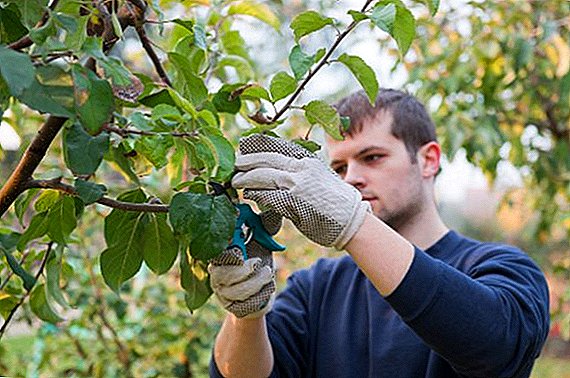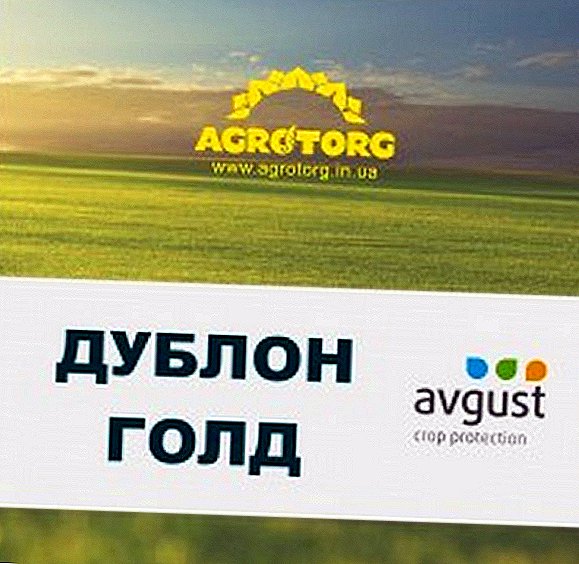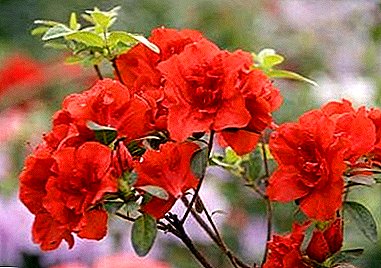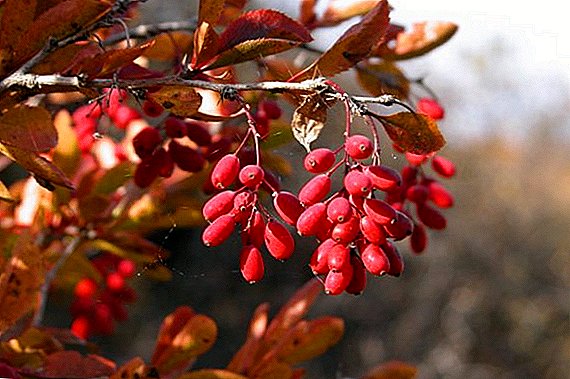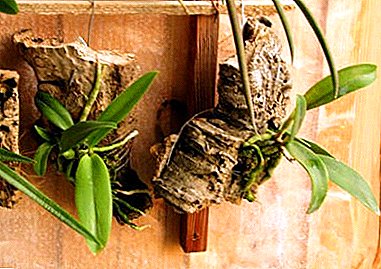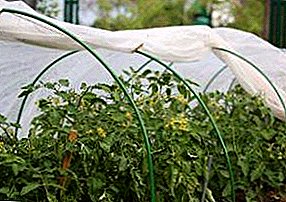 Oyster mushrooms have long been appreciated by all who adhere to the rules of dietary nutrition. These mushrooms are low-calorie and contain a lot of useful elements.
Oyster mushrooms have long been appreciated by all who adhere to the rules of dietary nutrition. These mushrooms are low-calorie and contain a lot of useful elements.
Therefore, today we will tell about their distinctive features, what types are, where they grow and how they can be used.
Oyster Oak
 Pleurotus dryinus
Pleurotus dryinus
- Synonyms: dry, pleurotus, oak mushroom.
- Edibility: Yes.
- View. The cap is semicircular, oval or lingual, fleshy, 4-10 cm in size. In young mushrooms it is cream or yellowish, covered with scales, slightly convex. As it grows, it straightens and even becomes concave. The edges are wavy, dissected by small cracks and traces of the bedspread. The stem is velvety, cylindrical, with visible remnants of a foil ring. The plates are frequent, slide down the stem almost to the base. In young specimens - white, with age - cream or dirty yellow. The flesh is harsh, compacted, with a light sweetish aroma.
- Where is growing: in natural conditions it grows in the European zone with a temperate climate and in North America. Loves trunks of broad-leaved trees (oak, elm).
- Collection time: the second half of July and the beginning of September.
- Application: universal. You can stew, boil, salt, fry, pickle, cook soups and sauces.

Did you know? Oysters are predators that can paralyze and digest various worms. That is why wormy oyster mushrooms are almost impossible to meet.
Oyster lemon
 Pleurotus citrinopileatus This oatmeal is also called elm. In nature, it is found in the Far East, but it is also productively grown at home. This species is called lemon due to an unusual bright yellow shade of the stem and fruit body, and it is called elm because of its specific growth - it is found in nature on elm (a type of elm). Aspine, poplar and birch wood are used to grow the house of the elm oyster.
Pleurotus citrinopileatus This oatmeal is also called elm. In nature, it is found in the Far East, but it is also productively grown at home. This species is called lemon due to an unusual bright yellow shade of the stem and fruit body, and it is called elm because of its specific growth - it is found in nature on elm (a type of elm). Aspine, poplar and birch wood are used to grow the house of the elm oyster.
Oyster mushrooms can be grown at home. The simplicity of technology, yield and picky these mushrooms makes them accessible to everyone.
- Synonyms: golden, yellow, ilmak.
- Edibility: Yes.
- View. The standard diameter of the ilmak cap is 3–6 cm, but there are also specimens that reach 10 cm. In the immature mushroom, the cap is bony, and eventually becomes covered with deep pits. In a mature mushroom, it is recoloured into a lemon-yellow color, turns into a funnel-shaped, with a wing edge and takes on an irregular shape. In old age the hat fades and becomes almost colorless. The plates are thin, frequent, pinkish, 3-4 cm wide, far down on the leg. The flesh is the same as in other species of oyster: dense, white. The stem is thin (2-2.5 cm), 6–9 cm long. In immature specimens it is located almost in the center, in mature specimens it is eccentric, cream-colored.
- Where is growing: Ilmaks grow in bunches or intergrowths (10-80 hats each) on dead wood (occasionally dry stands) elm boles in deciduous and mixed forests in the Primorsky Territory. They are found on birch trees in the northern part of Eastern Siberia.
- Collection time: from July to October. The peak falls on the rainy season.
- Application: lemon oyster is suitable for use both fresh, and for drying and pickling. In ripe specimens, only the cap is used as food, because their legs are often rough.

Important! In some cases, it is necessary to remove a fragment of a cap that has become rough near the leg.
Oyster Pulmonary
 Pleurotus pulmonarius
Pleurotus pulmonarius
- Synonyms: beech, whitish, spring.
- Edibility: Yes. It has no toxic specimens and twins.
- View. The oyster cap is rather large - up to 15 cm. The fan shape is light, almost white. In ripe mushrooms darkens and becomes yellowish or pale yellow. The structure is fleshy. Leg - strong, white, shortened. The plate slides on the leg. The pulp is fibrous, watery. This species is distinguished by a pleasant, aniseed aroma.
- Where is growing: in nature it occurs on the sides of deciduous and coniferous trees, as well as on birch trees, lindens and aspens in the park area and gardens.
- Collection time: from July to September.
- Application: any cooking method.

Of the mushrooms growing on the trees, you can use the mushrooms (winter shade), sulfur-yellow tinder, and the chaga birch mushroom is famous for its healing properties.
Royal Oyster (steppe)
 Pleurotus eryngii
Pleurotus eryngii
- Synonyms: steppe, steppe white fungus, eringa.
- Edibility: Yes.
- View. The royal oyster has an average (4-13 cm), fleshy, bulging hat. Growing up, it becomes smooth, slightly lamellar, funnel-shaped. In unripe mushrooms the cap is white or gray-red. As it develops, it becomes yellow. The plates are wide, loose, in young mushrooms they are white, in mature mushrooms they are cream, yellow, white and pink. The flesh is milky or yellowish, compacted, fleshy, when ripening becomes loose. The taste is light mushroom. Leg - whitish, small (up to 4 cm) and wide (up to 2 cm), dense.
- Where is growing: in contrast to the rest, it does not grow on trees, but prefers mountain-steppe or semi-arid zones, pastures. It grows on the out-of-date ferule roots or other plantings of the umbrella type.
- Collection time: September October.
- Application: This species is considered the most delicacy of all the oysters. Mushrooms can be dried, pickled or used fresh. In mature specimens, only caps are used.

Did you know? Mushrooms are called mushrooms for a reason, but because they develop in a specific “hanging” state.
Oyster mushroom
 Pleurotus ostreatus
Pleurotus ostreatus
Today it is the most popular edible species.
- Synonyms: oyster oyster mushroom, lump, oyster mushroom.
- Edibility: Yes.
- View. The fungus has a fleshy, large (3-25 cm) hat, externally resembling an oyster, smooth on top, occasionally wavy. The main color is gray. However, normally are brown, gray and yellow shades. Leg - a small, but noticeable, from the cap extended. It has a cream shade, smooth, near the base is stiff and fleecy. The flesh is juicy, tender, dense. In adult fungi becomes stiff, there are dense fibers.

Important! Sometimes the leg may be completely absent.
- Where is growing: the natural environment is deciduous (mainly willow, birch, aspen), sometimes coniferous forests. Distributed almost throughout the territory of the former USSR.
- Collection time: mid September - end of December. If the weather is cool, it may appear in summer.
- Application: widely used in cooking. Suitable for frying, pickling, stewing, canning, salting, drying, fermentation, freezing. In medicine, it is used in the treatment of cancer pathologies, with radio and chemotherapy.
Autumn oyster
 Panellus serotinus
Panellus serotinus
- Synonyms: Alder, Swine Willow (Panellus serotinus), Late Panelus.
- Edibility: Yes.
- View. This mushroom has a one-sided, elongated, asymmetrical cap in the shape of an ear, 10-12 cm long and up to 6 cm wide. In immature mushrooms it is gray or gray-brown, and in adults it is gray-ocher. The flesh is whitish, with a soft mushroom flavor and aroma. In a rainy period it becomes watery. The plates in young specimens are white, and then become gray-brown. Leg - slightly pubescent, short, dense.
- Where is growing: on the stumps and stems of deciduous trees: aspen, maple, alder, wind, etc. Habitat - temperate forest area of heterogeneous and deciduous tracts.
- Collection time: August-December.
- Application: consumed fried, pickled, pickled, dried, frozen and cooked.

Familiarize yourself with the technology of drying and freezing oyster mushrooms, as well as general tips on pickling and salting mushrooms.
Oyster orange
 Phyllotopsis nidulans
Phyllotopsis nidulans
- Synonyms: phyllotopsis nesting or nesting.
- Edibility: conditionally edible.
- View. Orange oily fluffy oyster skin, cap diameter - 7-8 cm. Hat - bright, painted with rich colors. The flesh is bitter, watery, white or golden, with a melon flavor. The stem is small or completely absent.
- Where is growing: lives in deciduous forests, on rotten stumps, fallen trees, exhausted birches, lindens, aspen.
- Collection time: September-November.
- Application: use only young mushrooms in cooking. Adult specimens are hard, with an unpleasant aroma resembling a rotten carrot.

Important! All mushrooms must be used carefully. In addition to individual intolerance, they create a feeling of heaviness in the stomach.
Oyster Covered
 Pleurotus calyptratus Called so because of the film covering the plates of early fungi. This veil is torn as it gets older and its remnants are noticeable along the edges of the cap.
Pleurotus calyptratus Called so because of the film covering the plates of early fungi. This veil is torn as it gets older and its remnants are noticeable along the edges of the cap.
- Synonyms: single
- Edibility: not.
- View. Cap young looking like a white kidney. As the oyster mushroom develops, the hat resembles an open fan with a protruding surface and folded edges. The surface is smooth, slightly sticky, with clear wet strips radiating from the trunk. Color - grayish brown or solid brown. With a lack of moisture becomes gray steel. As it grows old, the hat fades and becomes almost white. Peduncle mushroom is difficult to distinguish. The plates are yellow-cream. The flesh is white, tight, in flavor is like a raw potato.
- Where is growing: on aspen felled trees in non-uniform forests of Central and Northern Europe.
- Collection time: April June.
- Application: practically inedible.

Did you know? Oyster mushroom began to breed during the First World War, because they went into a soldier's diet.
Oyster Cone
 Pleurotus cornucopiae
Pleurotus cornucopiae
- Synonyms: abundant.
- Edibility: Yes.
- View. These mushrooms have a rounded, convex (with age - horn-shaped) white or yellowish cap, 3-13 cm in size. As the head matures, it darkens and gets a brownish tint. Leg - rounded, short, only 1 cm, at the foot - thin. Color - Milky or Fawn. The plates are sparse, light, intertwined from time to time and form an unusual pattern. The flesh is tight, fleshy, with a light aroma and great taste.
- Where is growing: chooses stumps of elm, oak, aspen, birch, maple, rowan trees. This oyster mushroom is common in China, Primorsky Krai, Japan.
- Collection time: May-September.
- Application: Horned oyster can be boiled, baked, stewed and fried. For blanks (pickling or pickling) is not suitable. Use only caps - the stem of the mushroom is coarse.

Important! Only non-aged specimens are taken for food, as nutritional value and taste are lost with age.
Oyster rose
 Pleurotus djamor
Pleurotus djamor
- Synonyms: flamingo.
- Edibility: Yes.
- View. Formed by intergrowths. Hats - bright pink, slightly convex. As they age, they become flat, rounded or lingual, with cracked tips, and the color fades. Diameter - 3-5 cm. The flesh is light pink, with a light oily taste and a peculiar aroma. The leg is small, 2 cm long. With a cap it connects to the side. The plates are reddish-pink, lighten with time.
- Where is growing: it can be found only in the Far East, in Primorye, or in countries of subtropical climate on the stems of deciduous trees.
- Application: cooking, frying. Tastes are low.

Learn more about edible forest mushrooms: cep, volnushka, grub, chanterelle, Mohovik, oilers, boletus, russula, boletus, camelina, shiitake, Dubovik, govorushka.
As you can see, oyster mushroom is a unique mushroom that can be harvested from spring to winter. A variety of types allows not only to use them in cooking, but also to apply in alternative medicine and landscape design.



